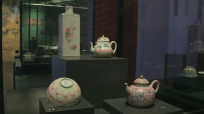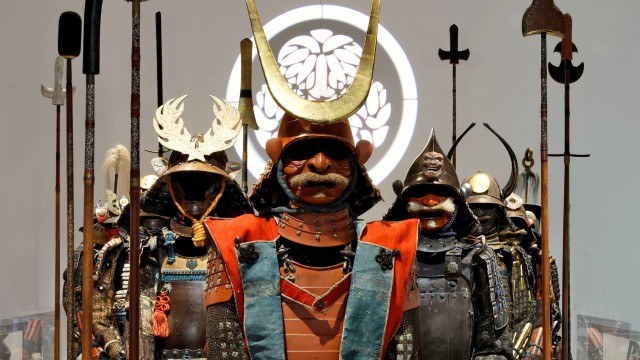Previous exhibition
April 30th, 2013 — September 29th, 2013
The Tea Roads
The Tea Roads ehibition is a journey across centuries and continents on ancient roads that climb to breathtaking heights, taking us all the way to modern times.
Starting in China, where the little leaves with a myriad of benefits first appeared, and where the three main means of preparing tea—boiling, beating, and infusing—were developed, the exhibition offers up an ancient itinerary that ventures into the realm of poetry and refinement, exploring the love of tea.
In all, over 200 objects from the Musée Guimet of Asian art and some twenty other Canadian and European lenders serve as guides for the visitor on this voyage of discovery through the world of tea, from its first appearance to its widespread use in Asia, the Middle East, Europe, and America.
In this short video, Jean-Paul Desroches guest curator for this exhibition explains the content of the exhibition. Mr. Desroches was a curator for the Musée Guimet, in Paris, for 35 years, and taught at the École du Louvre for 20 years.
The birth of tea... from a legend
Tea’s beginnings are rooted in a beautiful legend that dates back to the year 2737 BCE. Legend has it that Emperor Shennong—well-loved by his subjects and venerated as the Father of Medicine—, who taught men to boil water before drinking it, was resting under a tree with a bowl of simmering water to calm his upset stomach. A gust of wind blew by, causing a few leaves to drop into his bowl. Shennong admired the colour the leaves imparted to the liquid, which he also found to be a delicious beverage. Tea was born.
The exhibition is laid out to represent the various routes that tea travelled before coming to its contemporary use, ending with a section in which visitors can further their knowledge of tea, its origins, cultivation, and processing.
On The Tea Horse Road
Under the Tang Dynasty (618-907), visitors follow tea from China to Upper Asia and Tsarist Russia. Tea was prepared by boiling.
The Way of Tea: Spirituality and Harmony
Under the Song Dynasty (960-1279), tea was beaten or mashed: green tea was ground with a millstone; the powder obtained was beaten in simmering water using a bamboo whisk. The Way of Tea introduces visitors to the profound calm found along the road to spirituality and harmony.
Maritime Routes
The maritime routes are those of turbulent dissemination, routes by which the precious beverage made its way around the world—so highly coveted that it was the cause of several wars. It was under the Ming Dynasty, in 1391, that a new and very simple way of preparing tea was developed: infusion.
A tea road of your very own
One of the exhibition spaces, designed in the style of a tea garden, provides an opportunity to get familiar with tea—its origins, how it is grown, processed, and distributed, its various designations, and its scents. Visitors put their noses to the test by smelling the various aromas emanating from the samples on display. The various ways of drinking tea according to different traditions are also examined: How do the Moroccans drink tea? What’s involved in India? How about in England?
During its presentation from April 30 to September 29, 2013, 121 067 people visited this exhibition.
The Tea Roads, presented by Four O'clock Teas, was produced by Pointe-à-Callière in partnership with the Musée national des arts asiatiques Guimet à Paris. Pointe-à-Callière thanks its sponsors: Air Canada Cargo, Canal Vie, Aéroports de Montréal, Tourisme Montréal, Hôtel Intercontinental, La Presse and The Gazette. This exhibition was supported by the Ministère des Relations internationales, de la Francophonie et du Commerce extérieur du Québec and the Ministère des Affaires étrangères de la République française (Consulate General of France in Quebec City) in conjunction with the 64th session of the Commission permanente de coopération franco-québécoise.


